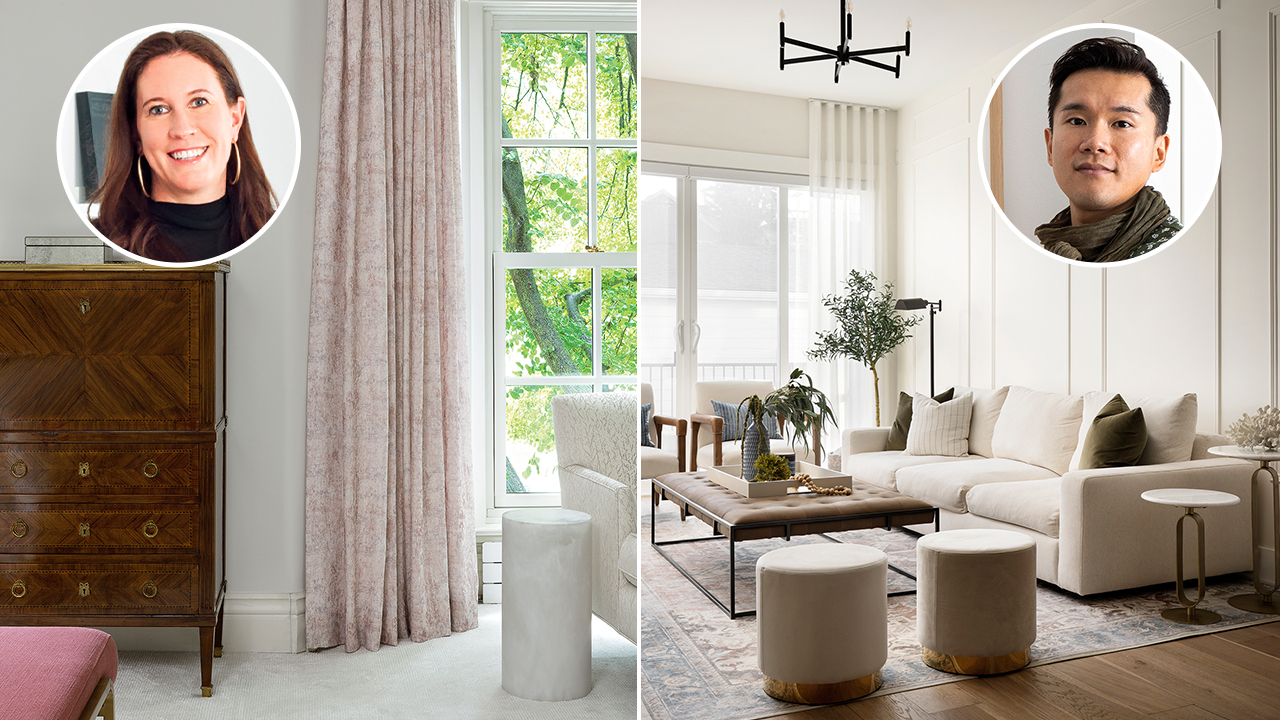Decorating & Design
In The Know: Top Designers Answer Your Decorating Questions
Updated on May 24, 2024

Are you thinking of redecorating? Read on!

Q: What do I need to keep in mind when designing a kitchen banquette?
A: It’s important to consider both form and function — you want a design that’s practical, fabrics that are easy to clean and a style that’s right for the space. Most of all, it must be comfortable. A typical seat height is 18 inches. Use durable materials such as performance fabrics or upholstery with a Crypton, Fibre Guard or stain-resistant finish. Details such as tufting and channelling can create a showstopping piece — and don’t be afraid to inject strong color and pattern! — Suzanne Tetrault, Studio Felix, Calgary

Q: What’s a hero fabric? Where do I use it and why is it important?
A: When we’re creating a room for clients, we start with a fabric, one that our clients love or that really speaks to us. We call this the hero fabric. We may not know where we’re using it when we begin our design journey, but we know it’ll dictate what the rest of the supporting fabrics look like. In a bedroom, we like the hero fabric to be on the headboard because it’s the focal point. In this room, the drapes, bench fabric and accent pillow all relate back to our hero fabric. — Cynthia Ferguson, Toronto

Q: Should I invest in custom millwork for my new home?
A: I always recommend custom millwork when your budget will allow — it can be hardworking, tailored to your lifestyle and needs, and can elevate a space to feel unique. When designing this custom bar, we went full height Me & Mo Creative, Meg Crossley and Morgan Michener (bedroom, kitchen) to maximize storage, incorporated recessed doors for flexibility and used panelled appliances, like the dishwasher drawer and beverage fridge, for a seamless look. The door-activated integrated lighting and stone backsplash are the unexpected elements that make the space special. — Erin Hannon-Watkinson, Studio Ha/Wa, Toronto

Q: What Metal Finish Should I Use In My Kitchen If I have Stainless Steel Appliances?
A: Because stainless steel appliances are so common in kitchens, they almost blend in to the cabinets that surround them. Gone are the days of needing to match your hardware and hood to your appliances. I enjoy using playful, alternative finishes such as copper, bronze or antique gold, especially on vent hoods and hardware. — Julee Wray, Truss Interiors & Renovations, Denver

Q: Why should I add vintage items to my home?
A: When you bring in vintage pieces, you’re adding depth, soul and character. Mixing old with new, you can tell a more interesting story and avoid the dreaded furniture showroom look. — Nam Dang-Mitchell, Calgary

Q: What do I need to know about selecting wallpaper?
A: Think about how wallpaper can complement or change the dimensional feeling of a room. Vertical stripes make a wall look higher, textured wall coverings can add warmth and a luxurious feeling to a room, and dark, cool colors recede, making a small space feel more dynamic and mysterious, or bold and interesting. Don’t be afraid of large-motif wallpaper! — Scott Yetman, Westmount, Que.

Q: What do I need to look for when ordering a sofa?
A: If the sofa is in a family room or den, you’ll want to select a low-maintenance, durable fabric with the right color and pattern to ensure it’s the most forgiving for any potential stains. You might also opt for a deeper sofa — 40 to 45 inches — perfect for lounging and watching movies. If the sofa’s in a formal living room, splurge on that show-stopping, higher-maintenance fabric you’ve always wanted. Budget is also a consideration but, since this is a big investment, look for down- or feather-wrapped cushions over a foam core. A good sofa can last you 30-plus years! — Louis Duncan-He, Calgary

Q: What do I need to know about ordering fabric for drapes?
A: Achieving polished window coverings involves many details and decisions. Hire a professional workroom to measure your windows and calculate the yardage required. If your fabric has a pattern repeat, you’ll almost always require more fabric than what’s needed for a plain solid. For length, we always take drapes from just below the ceiling to the floor, i.e. “kissing the floor.” If you want a more voluminous look, consider pooling, and make sure you have enough fullness so that the drapes don’t look too taut or skimpy when drawn. Look for extra-wide fabrics; it’s a great way to maximize your budget. — Meghan Carter, Toronto

Q: Where should I splurge in a kitchen reno?
A: Spend your money on quality cabinets! They’re already a large chunk of your budget, they’re difficult to repair or replace later and, most importantly, they define your style. Invest in quality, solid wood cabinets and a good designer who will help you get the most out of your storage. — Sarah Robertson, Studio Dearborn, Westchester County, N.Y.
House & Home


